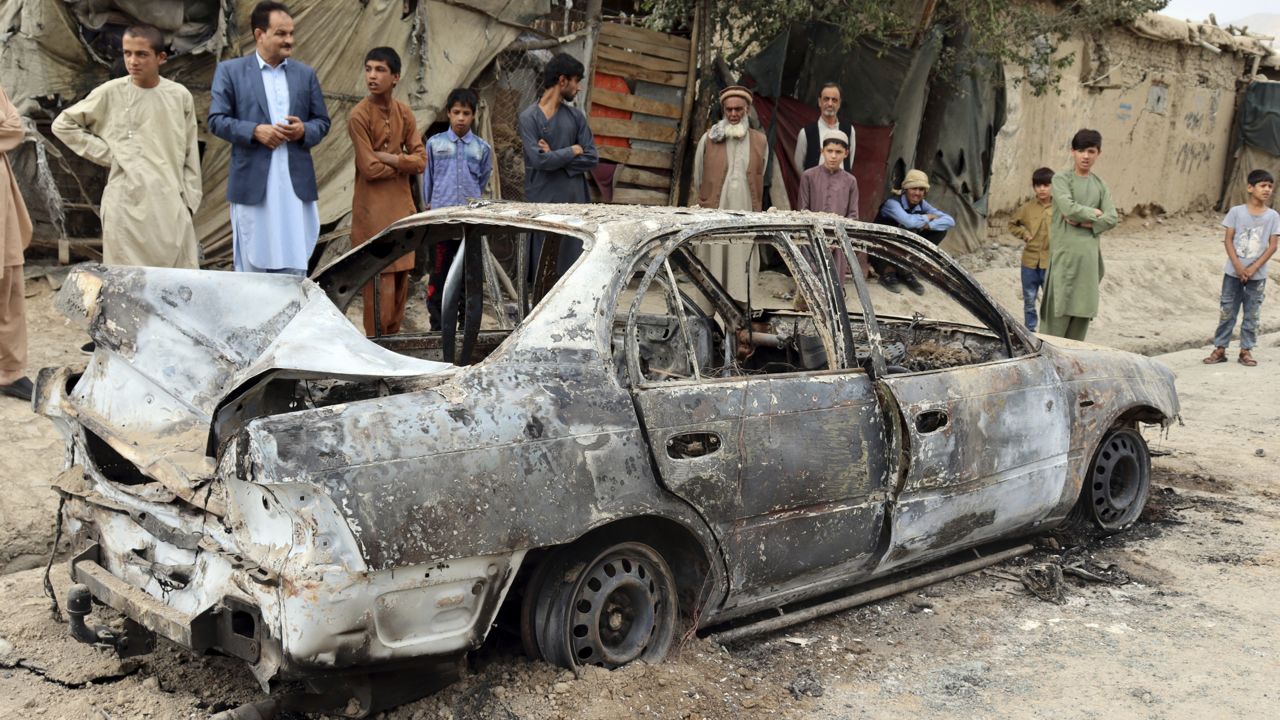Rocket fire apparently targeting Kabul’s international airport struck a nearby neighborhood on Monday, the eve of the deadline for American troops to withdraw from the country’s longest war after the Taliban takeover of Afghanistan. It wasn’t immediately clear if anyone was hurt.
In a statement, White House press secretary Jen Psaki said that National Security Adviser Jake Sullivan and Chief of Staff Ron Klain briefed President Joe Biden on the rocket attack.
"The President was informed that operations continue uninterrupted at HKIA, and has reconfirmed his order that commanders redouble their efforts to prioritize doing whatever is necessary to protect our forces on the ground," the statement continues.
The rockets did not halt the steady stream of U.S. military C-17 cargo jets taking off and landing at Hamid Karzai International Airport in the Afghan capital. The Islamic State group’s affiliate in Afghanistan has claimed responsibility for the attack, saying it fired at least six Katyusha rockets at the airport. Last week, the Islamic State group launched a devastating suicide bombing at one of the airport gates that killed at least 169 Afghans and 13 U.S. service members.
The airport repeatedly has been a scene of chaos in the two weeks since the Taliban blitz across Afghanistan that took control of the country, nearly 20 years after the initial U.S. invasion that followed the Sept. 11 terrorist attacks. But since the suicide bombing, the Taliban have tightened their security cordon around the airfield, with their fighters seen just up to the last fencing separating them from the runway.
In the capital’s Chahr-e-Shaheed neighborhood, a crowd quickly gathered around the remains of a four-door sedan used by the attackers, which had what appeared to be six homemade rocket tubes mounted where the backseat should be. The Islamic State group and other militants routinely mount such tubes into vehicles and quietly transport them undetected close to a target.
“I was inside the house with my children and other family members, suddenly there were some blasts,” said Jaiuddin Khan, who lives nearby. “We jumped into the house compound and lay on the ground.”
The rockets landed across town in Kabul’s Salim Karwan neighborhood, striking residential apartment blocks, witnesses said. That neighborhood is about 1.86 miles from the airport. There were no immediate reports of injuries.
The U.S. military did not respond to requests for comment. After the rocket fire, planes continued to land and taxi across to the northern military side of the airport. Planes took off roughly every 20 minutes at one point Monday morning.
Smoke from several fires along the airport’s perimeter could be seen throughout Monday. It wasn’t clear what was ablaze, though U.S. forces typically destroy material and equipment they won’t take with them during the evacuation.
The airport had been one of the few ways out for foreigners and Afghans fleeing the Taliban takeover. However, coalition nations have halted their evacuations in recent days, leaving the U.S. military largely alone at the base with some remaining allied Afghan forces providing security.
The U.S. State Department released a statement Sunday signed by around 100 countries, as well as NATO and the European Union, saying they had received “assurances” from the Taliban that people with travel documents would still be able to leave the country.
The Taliban have said they will allow normal travel after the U.S. withdrawal is completed on Tuesday and they assume control of the airport. However, it remains unclear how the militants will run the airport and which commercial carriers will begin flying into the field given the ongoing security concerns there.
While the Taliban has honored a pledge not to attack Western forces so long as they evacuate by Tuesday, the threat from the Islamic State’s local affiliate remains a danger. The group, known as the Khorasan Province after a historic name for the region, saw some of its members freed as the Taliban released prisoners across the country during their takeover.
On Sunday, a U.S. drone strike blew up a vehicle carrying Islamic State suicide bombers before they could attack the ongoing military evacuation at Kabul’s airport, American officials said. However, the Taliban said the strike killed at least 10 people — including civilians and three children, sparking anger over the civilian casualties.
U.S. Navy Capt. Bill Urban, a spokesman for the American military’s Central Command, acknowledged the reports of civilian casualties.
“We would be deeply saddened by any potential loss of innocent life,” he said in a statement.
The U.S. carried out another drone strike elsewhere in the country on Saturday that it said killed two Islamic State members.
By Tuesday, the U.S. is set to conclude a massive two-week-long airlift of more than 114,000 Afghans and foreigners and withdraw the last of its troops, ending America’s longest war with the Taliban back in power.
However, Afghans remain fearful of the Taliban returning to the oppressive rule for which it was once known. There have been sporadic reports of killings and other abuses in the sweep across the country.
Meanwhile, a cross-border shooting across the frontier between Afghanistan and Pakistan killed two Pakistani soldiers, the military said. Pakistani troops “responded in a befitting manner” after the attack in the district of Bajur of the country’s Khyber Pakhtunkhwa province, the military said.



